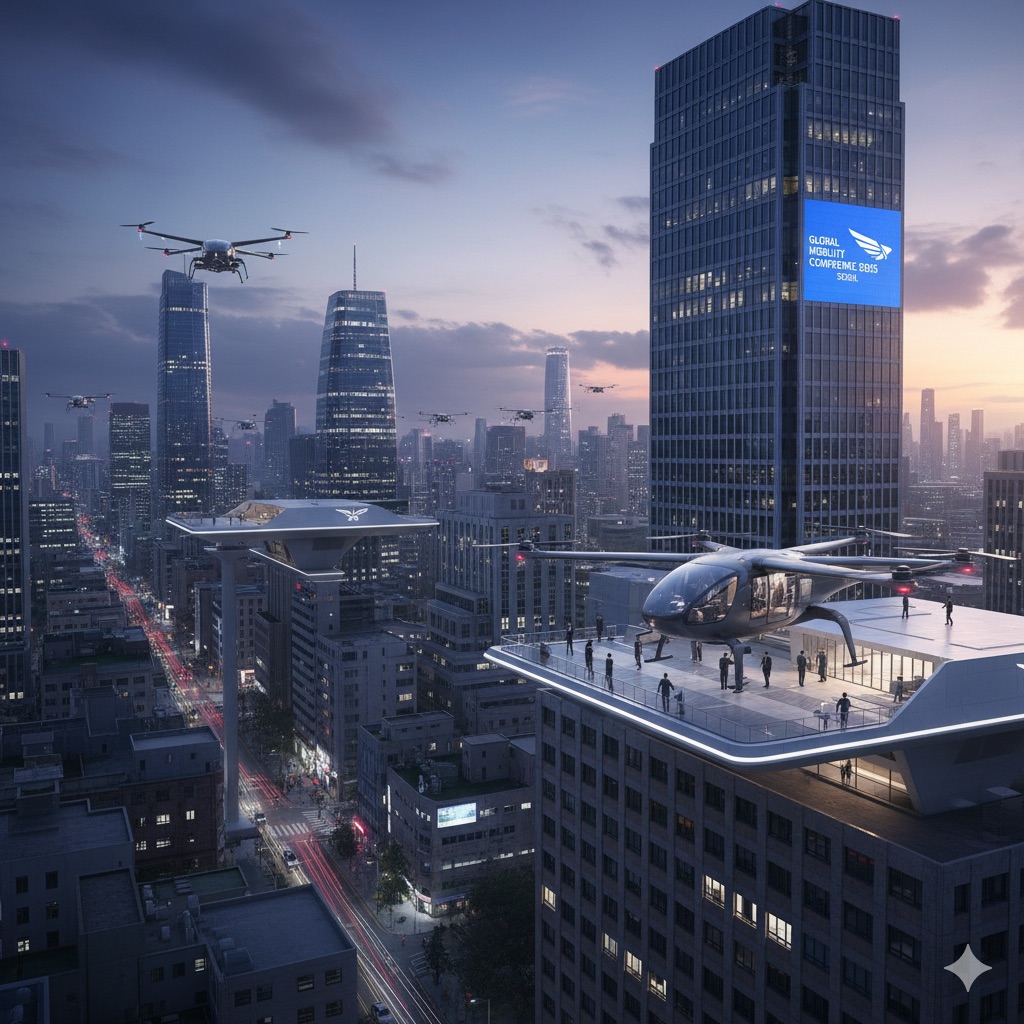The 2025 Global Mobility Conference held in Seoul intensively discusses commercialization roadmaps and efficiency improvement strategies for cutting-edge robotics technologies including autonomous driving, Urban Air Mobility (UAM), and logistics automation.
Automation Effects Driving Mobility Innovation
The conference, co-hosted by Korea’s Ministry of Land, Infrastructure and Transport, Korea Transportation Safety Authority, and OECD International Transport Forum, forecasts that autonomous vehicles and unmanned aerial mobility (UAM) will dramatically elevate automation levels in existing transportation systems. Autonomous driving technology is projected to reduce traffic accidents caused by human error by up to 90%, while UAM could cut average travel time by 60% through urban traffic congestion relief.
Hyundai Motor’s AVP Division President Song Chang-hyun emphasized in his keynote speech that “AI algorithms in autonomous driving platforms achieve 10 times faster response rates and 99.9% accuracy compared to human drivers, simultaneously securing traffic safety and operational efficiency.”
Significant Improvements in Work Efficiency and Safety
The introduction of automated mobility systems is expected to substantially enhance work efficiency in traffic control and logistics transportation. Dr. Gabriel Machini from MIT Media Lab analyzed that “AI-based traffic optimization systems can increase traffic processing capacity by 40% compared to existing systems through integrated management of signal control, route guidance, and vehicle-to-vehicle communication.”
Particularly in logistics, unmanned delivery systems utilizing autonomous delivery robots and drones are expected to achieve over 99% delivery accuracy and 50% reduction in delivery time while significantly reducing workers’ repetitive tasks and risk exposure.
Cost-Benefit Analysis of Implementation
According to presentations by conference participating companies, while initial implementation costs for autonomous driving and UAM technologies are high, they are projected to generate substantial economic benefits in the medium to long term. Global companies including BYD and Joby Aviation announced that autonomous commercial vehicles can achieve return on investment within 5 years and reduce annual operating costs by 30%.
For UAM, analysis shows 60% operating cost reduction compared to existing helicopters, along with 90% noise pollution reduction, enabling expanded urban utilization. Samsung Fire & Marine Insurance announced plans to offer insurance premium discounts through autonomous driving insurance products based on reduced accident rates.
Actual Implementation Cases and Expansion Plans
The Korean government plans to begin UAM pilot operations in Seoul’s downtown sections from the second half of 2025 through the K-UAM demonstration project, with expansion to major cities nationwide by 2030. Hyundai Motor Group is conducting demonstration tests by building autonomous driving-based mobility services and integrated energy management systems in Saemangeum Smart City.
Second Vice Minister of Land, Infrastructure and Transport Kang Hee-up stated, “We will expand policy support so that mobility automation technology can contribute to guaranteeing mobility rights for transportation-disadvantaged groups and resolving regional gaps, beyond simple transportation efficiency improvements.”

